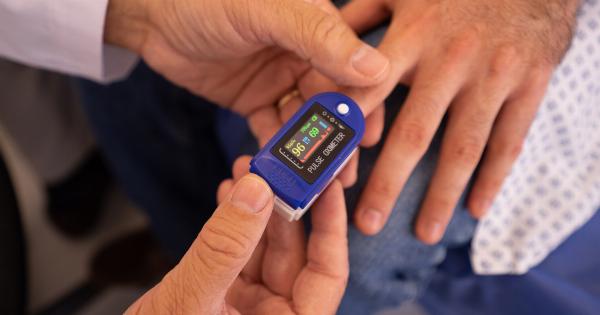Arteries are the blood vessels that carry oxygen and nutrient-rich blood from the heart to the rest of the body. However, various conditions can cause problems in the arteries, including atherosclerosis, aneurysms, and peripheral artery disease.
While some of the symptoms of these conditions are clear, others may be paradoxical, meaning that they seem counterintuitive or opposed to the typical presentation of the disease. Here, we discuss some of these paradoxical signs of arterial problems, which can be observed through different images.
Arteries and Their Functions
Before we dive into the paradoxical signs of arterial problems, it’s essential to understand how arteries work. Arteries are blood vessels that carry oxygenated blood from the heart to the body tissues.
They play a crucial role in maintaining healthy blood flow, ensuring that our organs and tissues receive the oxygen and nutrients necessary for their proper functioning. The walls of arteries are thicker and more muscular than veins, allowing them to withstand the pressure of blood pumped from the heart.
However, various factors can lead to the hardening and narrowing of the arteries, causing various health problems that may have paradoxical signs. Here are some examples:.
Peripheral Artery Disease (PAD)

Peripheral artery disease (PAD) is a condition that affects the arteries outside the heart and brain. It typically occurs when fatty deposits accumulate in the artery walls, reducing blood flow to the limbs, particularly the legs.
While many people associate PAD with leg pain or cramping, some patients may experience paradoxical symptoms, such as leg numbness or weakness.
Atherosclerosis

Atherosclerosis is a type of arteriosclerosis, a condition in which the artery walls become thick and stiff.
Atherosclerosis occurs when plaque, a fatty substance, and other deposits accumulate in the walls of the arteries, leading to restricted blood flow. Paradoxically, some people with atherosclerosis may not experience any symptoms until a blood clot forms, completely blocking the artery, causing a heart attack or stroke.
Abdominal Aortic Aneurysm (AAA)

An abdominal aortic aneurysm (AAA) is a condition in which the aorta, the body’s largest artery that runs through the abdomen, bulges or expands.
While some AAA patients may experience abdominal or back pain, others may not notice any symptoms until the aneurysm ruptures, which can cause severe internal bleeding and may be fatal. In some cases, an AAA may also obstruct the blood flow to the legs, causing pain or cramping.
Carotid Artery Disease

The carotid arteries are the blood vessels that supply blood to the brain. Carotid artery disease occurs when plaque builds up in the carotid arteries, restricting blood flow to the brain and increasing the risk of a stroke.
While some patients with carotid artery disease may experience symptoms such as weakness or numbness on one side of their body, others may not have any signs until they suffer a stroke. Thus, it’s essential to periodically check the carotid arteries with imaging tests, such as ultrasound or MRI.
Raynaud’s Disease

Raynaud’s disease is a condition in which the small blood vessels in the fingers or toes constrict excessively, causing them to feel cold and numb.
While this condition is not directly related to arterial problems, in some cases, it may be a sign of underlying arteriosclerosis or peripheral artery disease.
Critical Limb Ischemia (CLI)

Critical limb ischemia (CLI) is a severe form of peripheral artery disease that occurs when blood flow to the legs or feet is significantly reduced.
This condition can cause wounds or sores that do not heal, gangrene, or even amputation if left untreated. While many people with CLI experience leg pain or ulcers, some may have paradoxical signs, such as a lack of pain or numbness, due to nerve damage caused by reduced blood flow.
Treatment for Arterial Problems
The treatment for arterial problems depends on the specific condition and its severity. Treatments may include lifestyle changes, medication, or surgery.
Some lifestyle changes that can reduce the risk of arterial problems include quitting smoking, maintaining a healthy weight, exercising regularly, and eating a healthy diet rich in fruits, vegetables, and whole grains. In some cases, medications such as aspirin, statins, or blood pressure drugs may help improve blood flow and prevent further damage to the arteries.
Conclusion
Arterial problems such as atherosclerosis, peripheral artery disease, aneurysms, carotid artery disease, Raynaud’s disease, and critical limb ischemia can have paradoxical signs that differ from the usual symptoms of the condition.
Thus, it’s essential to be aware of these signs, get regular check-ups, and seek medical attention if any abnormalities are noticed. With the right treatment and lifestyle changes, many arterial problems can be effectively managed, reducing the risk of complications and improving overall health and well-being.




























